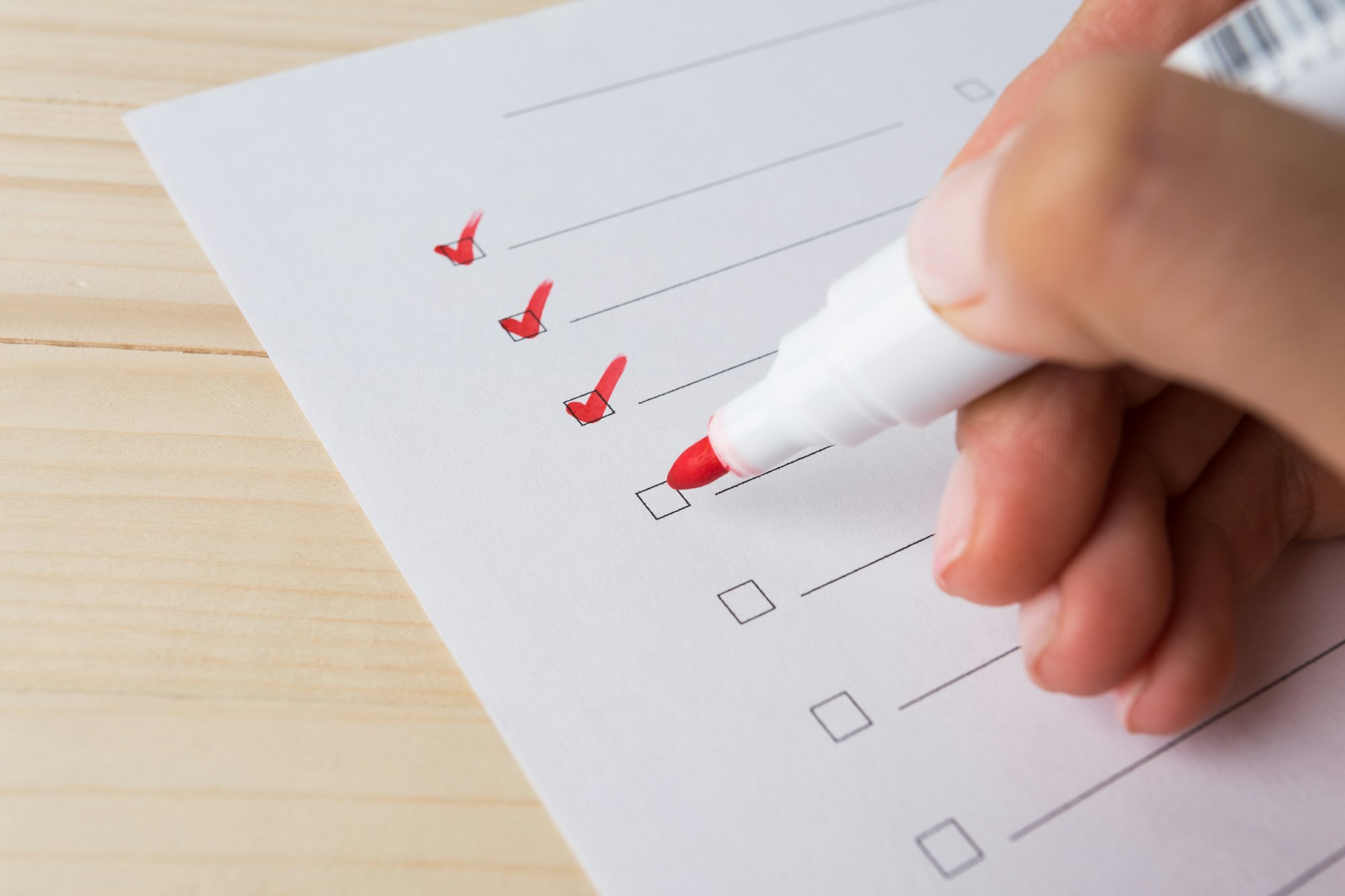How do Presentation Aids Help to Reduce Apprehension
Table of Contents
Using visual help like slides, infographics or videos when you do a presentation can really make you less nervous and it make the talking better. The person giving the talk is able to point where the people looking should focus, they makes understanding easier and lay down a organize way for what’s being talked about.
Them aids is real useful for highlighting the main stuff making speakers more sure when they talk and keeping folks watching and listening good. Them visual helps also give everybody something to look at together taking some of the spotlight off the person who’s talking so it can make them less scared about speaking in public.
Presentation aids acts like helpful sidekicks giving speakers the power to share their points clear and persuasive. They also helps audience look back at what was discuss after a talk is over making main ideas stick and helping remember them.
Key Takeaways
Presentation aids can alleviate apprehension and enhance the effectiveness of a presentation.
Visual elements such as slides, infographics, or videos direct attention and facilitate understanding.
Aids are shared focal points, lessening the audience’s focus on the speaker and reducing speaker apprehension.
They reinforce key points for both the presenter and the audience, aiding retention.
What Are Presentation Aids?
Presentation aids are any visual elements used to support and enhance a presentation. They can take various forms, such as slides, diagrams, charts, images, videos, handouts, or props. The key purpose of these aids is to supplement and complement the presenter’s spoken words. By incorporating different presentation aids, presenters can appeal to multiple learning styles and maximize audience engagement.
Types of Presentation Aids

Slides
Slides is a highly popular and useful aid in presentations for good reasons. It lets the speaker to set out their materials in way that’s both visually attractive and simple to track. With slides you can add text, picture, videos, graph or chart to highlight main ideas and brings visual appeal into they talk.
Infographics
Infographic is visual representation for informations or datas often used to show complicated ideas or stats in a way that looks good and easy to get. They helps a lot when you has to present materials with lots of data because they breaks it down and make the informations easier for peoples to take in.
Videos
Video make for strong presentin’ helpers that good at gettin’ the crowd involved and makin’ a subject interesting. Them can show things like how-tos, talks with people or them saying good stuffs which makes your talk more lively-like. Just remember to pick videos that fits what you sayin’, gotta be top-notch quality too and keep it short so folks don’t zone out.
Handouts
Paper give-aways is hard copies of informations that can be handed to the listeners while or following a talk. They might includes crucial details graphs illustrations and extra materials for more studying. Paper give-aways offers something concrete for people to hold onto and makes sure them get all needed details even once the talk has finished.
Props
Props be tangible things you use for showing or making a point better in your talk, like when you bring a product sample or stuff that’s about what you’re saying to help folks get them complex thoughts and make it hit home. Just remember not to throw too many props into the mix keep them from stealing the show.
Kinesthetic aids
Physical activity aids like role playing games and interactive exercises gets audiences involved by using they hands. This things encourage peoples to join in and helps with they active learning.
Physical supports are specially great when you show hard or techy stuff because it lets peoples to feel the subject directly.
Them just some example of different presentation aids that presenter could use in their presentation. The main thing is to pick the best aid for you content and audience, always remembering what you wants to achieve with your presentation.
Benefits of Presentation Aids

Besides cutting down worry and making presentation better, presentation helps give many other good things what can help make a talk go well. Some extra pluses is:
Visual helps is real good when you need to explain stuff that’s super tricky or got a lot of techy things. It can make the hard ideas into easier pictures so peoples can get it better and remember them more easy.
Enhancing how long audience remember: They use presentation helps for making main ideas stick better and improving how much audience keep in their mind with pictures for helping them to remember stuff. This be really important when showing lots of data that might be hard for peoples to remember if they don’t got visual things to look at.
Boost engagement. Putting in good-looking stuff into a talk keep audiences interested and engaged, that’s extra useful for long talks or subjects that seems dull or uninteresting.
Different presentation aids is used for adding variety and to makes the talk interesting for listeners. It help in breaking up long talking and stops audience from getting disengage or bored.
Visual helpers can make it easier for audiences with different backgrounds and ways of learning to grasp and strengthen important stuff by showing them pictures or examples.
Presentation aids have a lots of advantage and using them in your talk can make it more powerful. They helps you to get your points across good and makes sure the people listening don’t forget what you said.
How do Presentation Aids Help to Reduce Apprehension
Presentation aids they helps in lowering nervousness by providing visuals that can make the talk more engaging and easier for understand.
Presentation aids have certain ways they helps lower the nervousness speakers feels:
Longer Retention:
When speaker uses visuals it help them to remembers their cues so they doesn’t forget while presenting. This mean that if any nervousness happen during speech, speaker can easy refer to his presentation aids and recalls where he are in his presentation.
Additionally using visual helpers keep the speaker on point and follow a structure. It can reduce worries and nervousness since speakers knows what coming next and prepare themself for it.
Additional Support:
Presentation aid gives more backup for them speaker. When audiences focus on the visuals elements it take pressure off from speakers to always be engaging and entertaining they.
This could help to lower anxiety and let the speaker concentrate on getting their point across in a compelling way. When speakers uses visual aids they can also makes them look more believable by offering proof or stats that backs up what they’re saying. This might raise the confidence of the speaker and lessen worry because he know there’s strong backing for his claims.
Grab More Eyes & Ears:
When you use presentation aids the speaker can more engage audience senses. This be especially help for to grab attention from audiences with different ways of learning.
When speakers use pictures or videos it catch the eye of people who learn by seeing and hearing making their point hit harder and stick in your memory.
Confidence Boost:
Utilizing visual aids also increase speaker’s self-assurance because it bring a lively aspect to his presentation. By adding in clips, interactive activity or different supports, speakers demonstrates their knowledge and enthusiasm for the subject which helps decrease nervousness and make them feeling more assured in how they present.
Confidence be a main thing when peoples speak in public also using aids in presentation help speakers for feeling easy and comfortable on the stage.
Building Rapport:
At last using presentation aids they can helps speaker to make connections with their audience. By getting them involved in interactive activities or giving out handouts speakers is able to create a experience that’s more personal and engaging for the audiences.
It help lower nervousness because speakers feel more bond to they audience and can concentrate on give a good talk.
Solidify Your Case:
Furthermore using visual aids can help make the speaker’s case or argument more stronger. Pictures and diagrams offers support for the point that is being made this makes it more believable and trustworthy to them who is listening.
When speakers uses charts graphs or other visual aids they helps communicate data and informations that’s hard to grasp with just words.
Using presentation aids can also help the audience visualize concepts and ideas, making them more relatable and understandable. This can be particularly helpful when presenting complex or abstract topics. By providing visual aids, speakers can help ensure that their audience understands and remembers their message.
What Can You Use As An Aid To Avoid Presentation Apprehension?
PowerPoint slides: This is one of the most commonly used presentation aids as it allows speakers to create visually appealing and interactive slide decks to support their message and engage the audience.
Handouts: Providing handouts or printed materials can also be an effective presentation aid, allowing audience members to follow along with the presentation and take notes.
Videos: Incorporating videos into a presentation can be an engaging way to support key points and add variety to the delivery. Videos can also help illustrate complex concepts or provide real-life examples that may be difficult to convey through words alone.
Graphics and images: Using graphics or images, such as charts, graphs, or diagrams, can help visualize data and make it easier for the audience to understand and remember.
Interactive exercises: Engaging the audience in interactive exercises, such as polls or group activities, can help reduce apprehension and create a more dynamic and engaging experience for the audience.
Props: Props can be used to physically demonstrate a concept or add a visual element to support a point being made in the presentation.
Hand gestures and body language: While not a traditional presentation aid, using hand gestures and body language can be effective ways to emphasize key points and engage the audience.
Notes or cue cards: Having notes or cue cards on hand can help speakers stay organized and on track during their presentation, reducing anxiety and apprehension related to forgetting important points or information.
Overall, presentation aids can play a crucial role in reducing speaker apprehension and delivering a successful presentation.
How To Avoid Presentation Apprehension? 6 Effective Tips
Practice, Practice, Practice: The more comfortable you are with your presentation and the material, the less likely you will be to experience apprehension. Practice your speech multiple times in front of a mirror or with friends and family before delivering it to an audience.
Visualize Success: Spend time visualizing yourself and giving a successful presentation. This can help you build confidence and reduce anxiety.
Breathe and Relax: Before starting your presentation, take a few deep breaths to relax your body and mind. This can help calm nerves and reduce apprehension.
Engage the Audience: Engaging the audience with interactive exercises or questions can help shift the focus away from yourself, reducing apprehension and making the presentation more interactive and engaging.
Use Positive Self-Talk: Avoid negative self-talk and instead focus on positive affirmations. Remind yourself that you are prepared and capable of delivering a successful presentation.
Focus on Your Message: Remember, the most important aspect of your presentation is your message. Focus on delivering it effectively rather than worrying about yourself or potential mistakes. By following these tips and incorporating presentation aids, you can effectively reduce apprehension and deliver a successful presentation that engages your audience and leaves a lasting impact.
Continue practicing and exploring different producing presentation aids to find what works best for you in boosting confidence and engaging your audience. With time and experience, you will become more confident and effective.
Checklist for Effective Use of Presentation Aids:

Identify the main purpose of your presentation and choose aids that support it.
Keep visuals simple and easy to understand.
Use high-quality images and graphics.
Limit the amount of text on slides or handouts.
Practice using presentation aids before delivering your speech.
Engage the audience with interactive exercises or polls.
Avoid overcrowding slides with too many elements.
Use consistent fonts and colors for a cohesive look.
Ensure that presentation aids are visible and easily accessible to your audience.
Don’t rely solely on presentation aids – continue to engage with your audience through eye contact, body language, and vocal variety.
With these tips in mind, you can effectively use presentation aids to enhance your delivery and make a lasting impact on your audience.
Disadvantages of Overusing Presentation Aids
While presentation aids can be highly beneficial, they should not be overused. Here are some potential disadvantages of relying too heavily on presentation aids:
Distracting from the message: Overwhelming the audience with too many visuals can take away from the main points and distract them.
Technical difficulties: Relying on technology for your presentation aids can backfire if there are technical difficulties, causing disruptions and hindering the delivery of your message.
Limited interaction: Overusing presentation aids can limit audience participation and interaction, leading to a less engaging experience for them.
Time constraints: Depending on the length of your presentation, incorporating too many aids may take up valuable time and leave you with less time to deliver your message.
Reducing creativity: Overusing presentation aids can also limit your own creativity and ability to effectively engage with the audience through other means, such as storytelling or humor.
To avoid these potential disadvantages, it’s important to find a balance between using presentation aids and relying on your own delivery skills. Remember that you are the presentation’s main focus, not the aids.
FAQs
How can impressive presentation aids transform a poor speech into a more credible and engaging one?
Impressive presentation aids can significantly enhance the effectiveness of a speech, even one that may not be strongly delivered. By incorporating well-designed visual aids effectively, a speaker can better illustrate their points, making the content more accessible and easier for the audience to understand.
Why is it crucial to avoid poorly designed presentation aids during an informative speech?
Poorly designed presentation aids can detract from the message of an informative speech, leading to confusion rather than clarity. Instead of helping the audience understand and retain information, ineffective visuals can distract or mislead, undermining the speaker’s authority and the speech’s overall impact.
In what ways do visual aids effectively reduce apprehension for speakers?
Visual aids can act as a powerful tool in reducing speaker apprehension by shifting some of the audience’s focus away from the speaker and towards the aid itself. This can alleviate the pressure and nervousness associated with being the center of attention. Furthermore, knowing that they have strong, informative visual aid support allows speakers to feel more confident in their delivery and the strength of their message.
How can presentation aids enhance audience memory and understanding?
Presentation aids can significantly enhance audience memory and understanding by providing concrete examples and visualizations of abstract concepts, particularly in topics related to human or household consumption. For instance, using graphs to show consumption trends or photos to illustrate the impact of certain behaviors on health can make the information more relatable and memorable.
Conclusion
In conclusion, the strategic use of presentation aids offers a multifaceted approach to reducing apprehension during public speaking. By providing visual reinforcement and organizational structure, these aids empower presenters to communicate more confidently and precisely. The incorporation of engaging visuals captures the audience’s attention and alleviates the pressure on the credible speaker to carry the presentation solely.
This sharing of focus allows presenters to feel less exposed and more supported, thus minimizing the sense of apprehension often associated with public speaking. Additionally, presentation aids facilitate a more dynamic and interactive environment, fostering collaboration and participation among the audience. Ultimately, by leveraging presentation aids effectively, speakers can transform potential apprehension into a catalyst for compelling, impactful communication.
Related Blogs
Get 7+ Mio. PowerPoint Assets - FREE SIGN-UP

Sign up for free to our PowerPoint extension, ExpertSlides. Everything you need, directly in PowerPoint. No credit card required.
Related Posts
Recent Posts
- Build a Stunning Slide in PowerPoint: How to Build a Stunning Slide in PowerPoint Step‑by‑Step Tutorial
- Build a Stunning Slide in PowerPoint: How to Build a Stunning Slide in PowerPoint Step‑by‑Step Tutorial
- Build a Stunning Slide in PowerPoint: How to Build a Stunning Slide in PowerPoint Step‑by‑Step Tutorial
- Build a Stunning Slide in PowerPoint: How to Build a Stunning Slide in PowerPoint Step‑by‑Step Tutorial
- Build a Stunning Slide in PowerPoint: How to Build a Stunning Slide in PowerPoint Step‑by‑Step Tutorial
